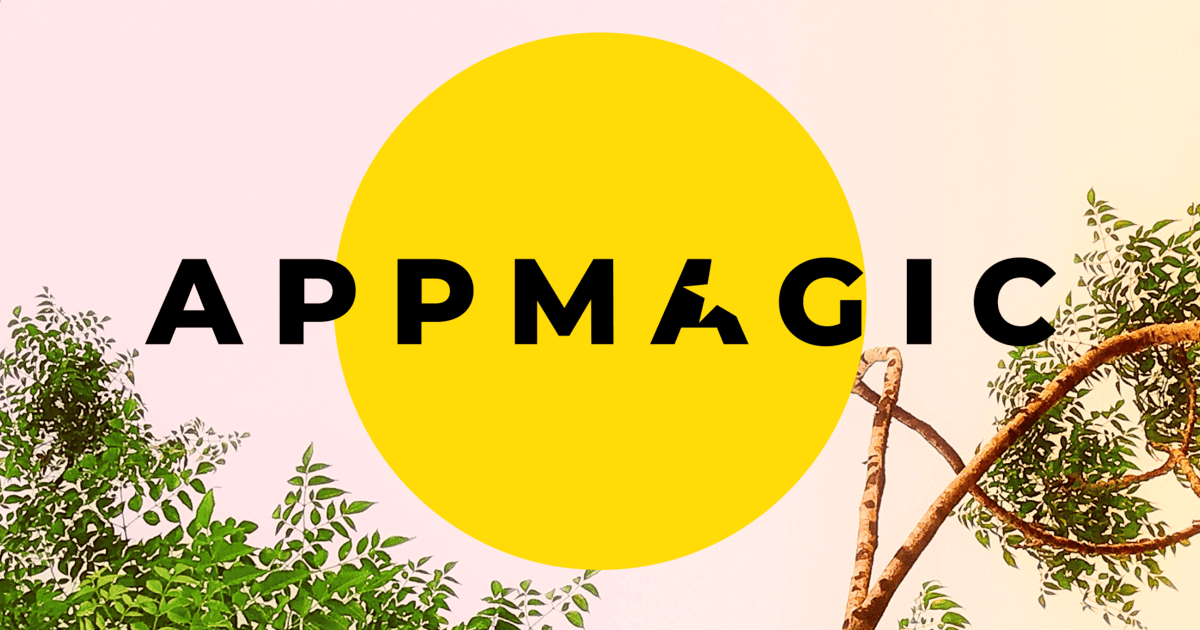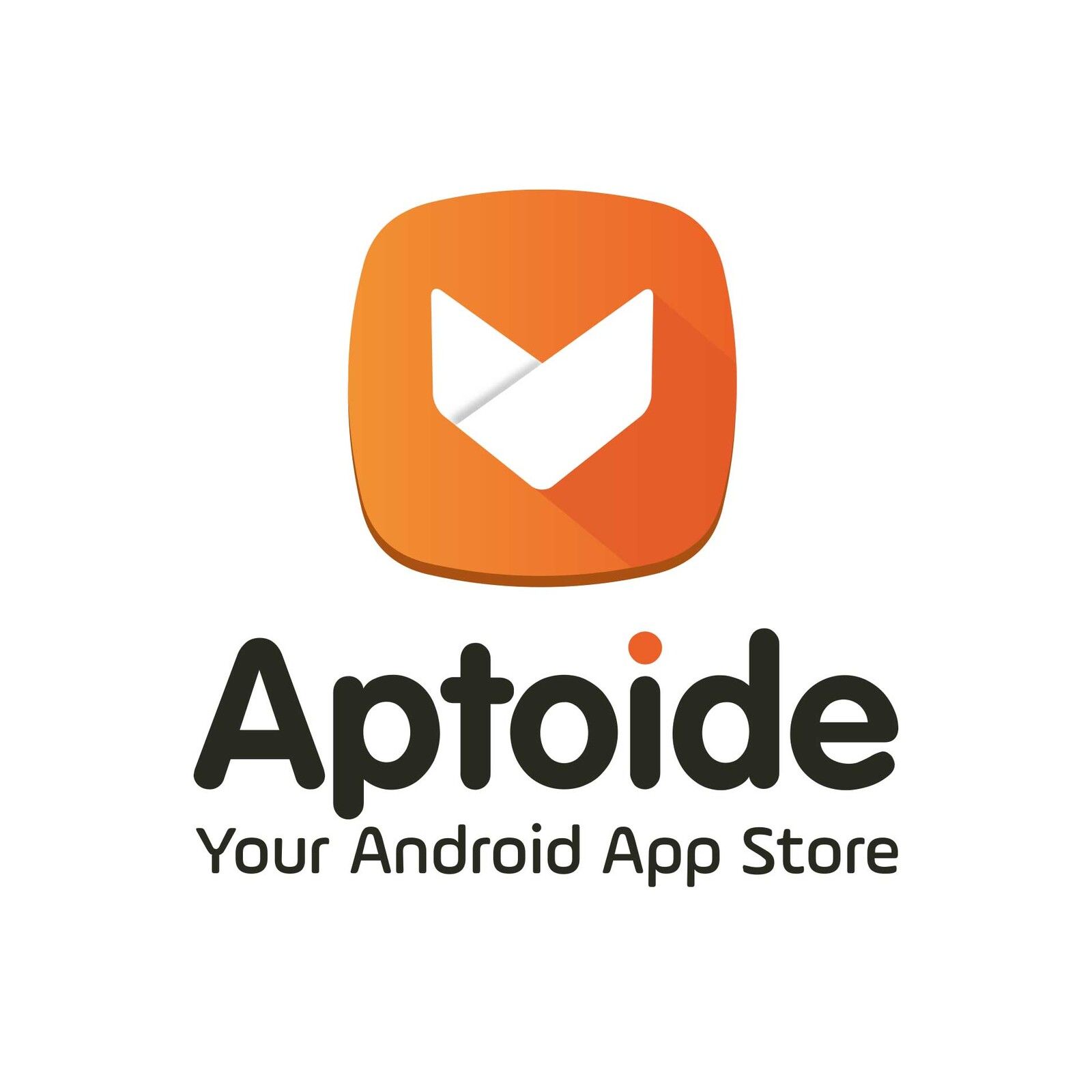With the vast array of mobile games on the market, competition for eyeballs and consumer dollars has never been more fierce. If that wasn’t bad enough, “gamification” has created a whole new sector of competition by delivering experiences that satisfy many of the same drives through the addition of game mechanics to non-game apps. They rely on the same methodologies to entice and retain users. Let’s take a look at how an extremely popular app is meeting this challenge.
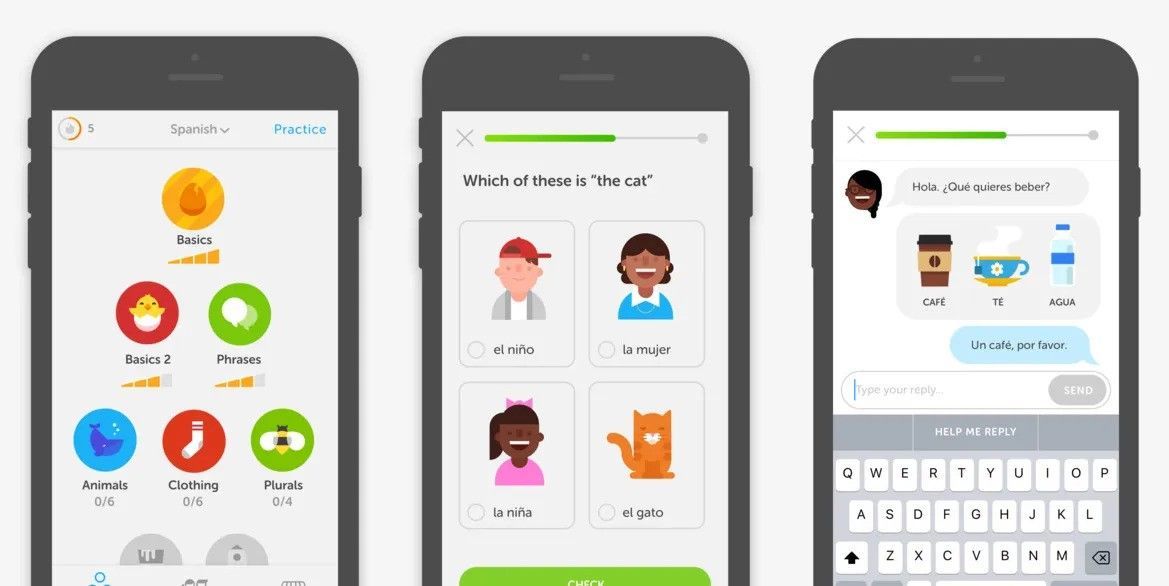
Duolingo is one of the most widely used mobile apps today and by far the most widely used language learning app. While not strictly a “game,” it does employ game mechanics throughout. Games mechanics have been employed for decades in digital learning applications and Duolingo stands out as Best of Breed. Duolingo’s Freemium (aka “Free to Play” or “F2P”) model is a breakaway success:
- more than 500 million users
- a new user every 0.7 seconds
- only about 5% are Premium Subscribers (Duolingo Plus)
So, how are they posting staggering earnings? Let’s look at the usual suspects
- Ad monetization
- In-App purchases (IAP)
- User quality
- Extending LTV
Unsurprisingly, Duolingo is factoring in every one of these.
Ad Monetization & In-App Purchases
Two of the most heavily leveraged methods are
Ad Monetization and
In-App Purchases (IAP). In Duolingo, ad monetization is constantly encountered. Every time a task is successfully completed (a lesson), the Learner sees an ad, sometimes two, in order to get all of the app messages regarding the lesson just completed, including awards or achievements. This can add up to an absurd number of ads; in a single play session that kept getting XP Bonus extensions, I was served at least a dozen ads.
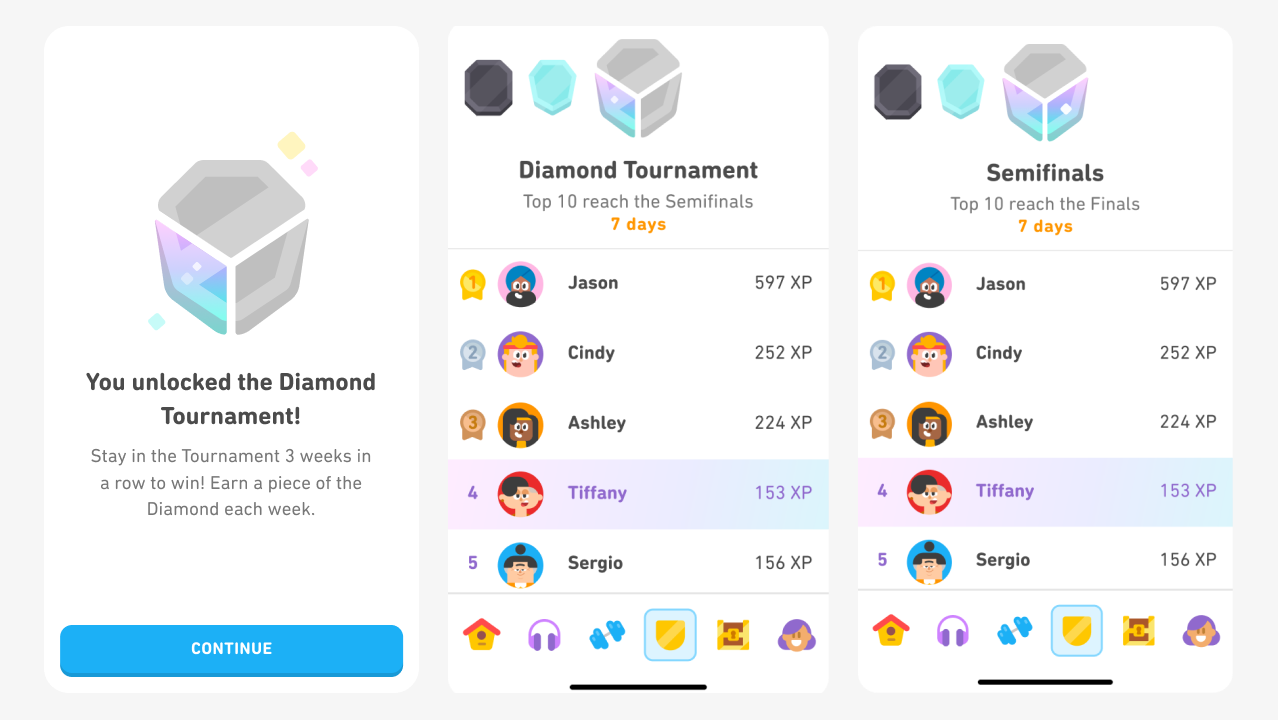
Learners are, however, highly incentivized to endure the ads to progress more rapidly in their learning and to chalk up Achievements, by which many players are highly motivated. The opportunity to earn double XP for 15 minutes can make the difference between whether a learner moves up into a higher “League” or drops down into a lower one.
As with any F2P model, Learners can use the app at any time but their mistakes are limited by 5 classic Hearts (akin to lives or energy in myriad games) which replenish a Heart automatically every 4 hours. A Learner can opt to Practice to earn Hearts in order to complete more lessons which triggers an ad and may offer a longer ad afterwards to earn another heart. Once the Learner is out of Hearts, to continue learning, they must either practice, watch ads, or both.
There are ample opportunities to spend cash in the app as Duolingo has monetized virtually all of the content in the app. Whether for faster advancement, to continue “play,” refill hearts, or participate in competitions and awards, there’s always something enticing Learners to spend real money. Learners always have the option to buy Gems which can be spent on all sorts of items: refilling hearts, paying for a Badge-related challenge (such as Legendary challenges), or extending a bonus. They can also be used to protect a Learner’s Streak (as sometimes life makes you forget or forgo your daily lesson) buying “Streak Freezes” as insurance policies against losing the streak.
In many ways, these two techniques are the easiest to employ (requiring the least game development) and are, thereby, less expensive than other methods. Virtually every mobile game out there uses at least one of the two; in F2P, both are usually employed, as in Duolingo. Game examples include “Clash Royale” or “June’s Journey” and legions of others. These days, you can’t play a mobile game without seeing an ad for Monopoly Go!
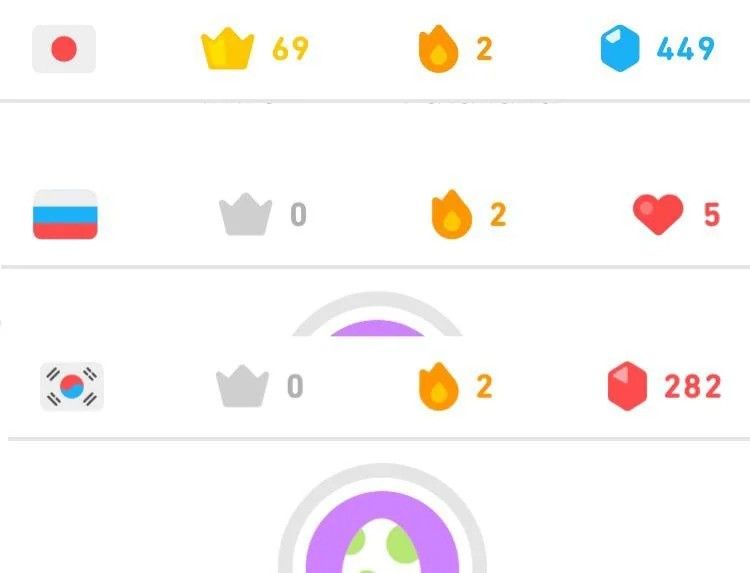
Often, games have multiple currencies: energy, money (Gold, Silver, Gilders), and some unique rare currency, usually Gems (Diamonds, Emeralds, etc.) of which players are given an allotment to start and may earn them by completing quests, areas, or levels; ordinarily, gems are easily gotten via micropayments. For instance, a micropayment in a game might get the player a huge number of Energy points, game currency (Gems, Hearts, Money), other in-game items (for the avatar or decor), or limited edition items and Duolingo follows that formula perfectly. The sleight of hand here being the cost of creating those in-game items is practically nothing as they're all just digital manifestations of in-game concepts and assets that have already been created.
User Quality
What about the quality of Duolingo users? It’s outstanding. Daily Average Users (DAU) was 21.4 million in Q3 2023 while Monthly was 83 million (MAU) in Q3 2023. These players are returning regularly for extended periods of time. As in most games, Duolingo employs several classic mechanics for getting players into a daily habit.
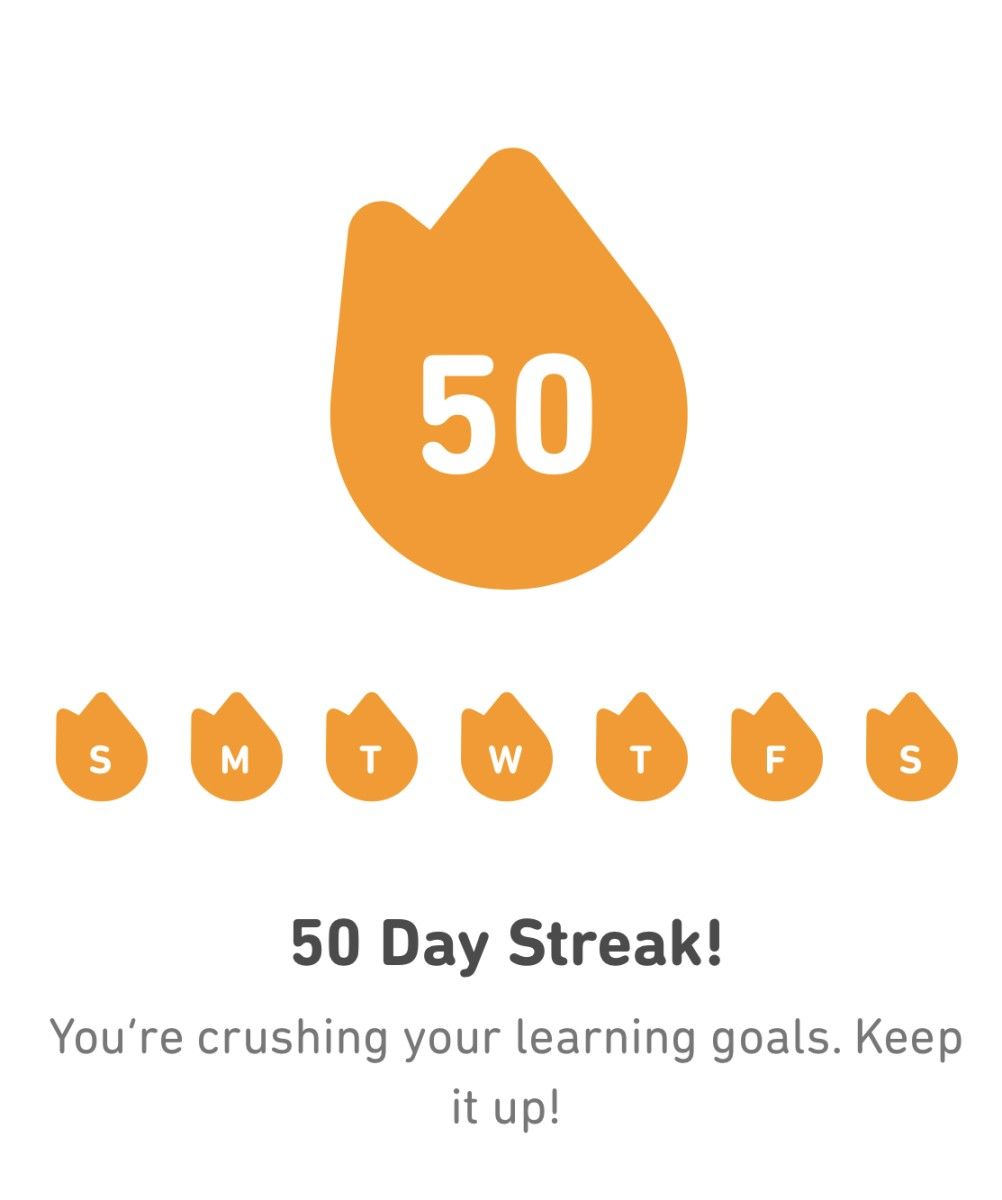
The most effective and visible are Streaks. For every day that a Learner completes a lesson, even practicing to earn Hearts, the streak is extended by a day. Learners can buy Streak Freezes, a sort of insurance policy against missing a day for whatever reason. FTP Learners can have up to 3 Streak Freezes; Subscribers get an additional slot.
The most clever mechanic it utilizes are timed chests. By using the app between 6 am and noon or between 6 pm and midnight, the Learner earns a chest that opens ONLY during the next bonus time slot; in other words, it’s designed to get you to log in both morning and evening to take full advantage of the bonuses available.
Extending LTV
As for LTV, the LTV of yearly subscribers is nearly twice that of monthly subscribers. As a non-premium Learner, there are plenty of reminders about upgrading, including immediately after nearly every regular lesson before the lesson is officially complete, including the ability to be rid of the ads and have unlimited Hearts.
Duolingo isn’t shy about offering trials of its subscription service. The trials last 3 months (enough time that Learners can easily see the difference in progress) and may be offered again.
Additional leveraging is the ease with which a Learner can share their achievements via social media, get bragging rights, and fulfill any Achiever needs they harbor. Likewise, it offers the ability to connect with other Learners (Friends), team up for quests, and congratulate them on their Achievements.
In the end, you want to look at your game and decide what will best fit your existing game and player base. Are you utilizing these monetization models effectively? What about the quality of your users? How can you improve it and extend their LTV? Duolingo is an excellent model from which to learn.


